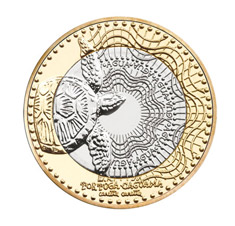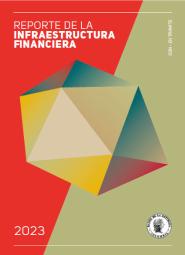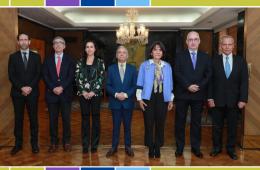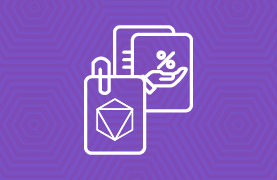1,000-Peso Coin
A loggerhead turtle, a highly migratory marine species, is the image in the obverse (Heads) of the new bimetallic COP$1000 coin, which will return to the hands of Colombian people when Banco de la República (the Central Bank of Colombia) puts it into circulation in the second half of 2012. The coin’s design, by the Colombian artist José Antonio Suárez, presents continuous wavy lines in various levels representing water waves. They are located from the center to the outer circumference of the coin, with a background of thin straight lines in a radial direction. It has a legend on a circular stripe with the word “AGUA” (WATER) consecutively repeated seven times and inverted each time compared to the previous one. It also shows the turtle entering the waves and includes this species’ common and scientific name.
On the reverse (tails), occupying the lower half of the coin, continuous wavy lines can be seen horizontally on a background of straight lines, with the legend “CUIDAR EL AGUA” (PROTECT THE WATER) repeated four times consecutively, and inverted each time compared to the previous one. In the upper half of the coin there is the coin’s denomination, the number 1000, and below it, the word “PESOS”. It also includes the text “REPÚBLICA DE COLOMBIA” (REPUBLIC OF COLOMBIA), the year of issue, and an underlying image that generates a visual effect based on the angle where it is seen. Hence, in one position of the coin, the word “MIL” (THOUSAND) can be read, but it changes to BRC (initials of Banco de la República de Colombia) when viewed from a different angle.
The texts of this coin are presented in the artist's handwriting.
Loggerhead turtles in the new coin
The loggerhead sea turtle (Caretta Caretta) is a highly migratory marine species that uses Colombian beaches, both Caribbean and Pacific ones, for its nesting and mating. However, it is at risk of extinction due to hunting and pollution.
Main features of the new 1,000-peso coin
Obverse (Heads)
 Rim: circular in high relief defined with a flat and plain surface.
Rim: circular in high relief defined with a flat and plain surface.
Outer field: it is composed of a sequence of high-relief and high-definition points and is parallel to the edge.
Internal field: located in the core of the coin, parallel to the outer rim and the edge, it is composed of a sequence of high-relief and high-definition points.
Outer waves: wave-shaped lines in various reliefs located between the two. Their displacement covers the ring and part of the core. They are interrupted by the text "TORTUGA CAGUAMA" (LOGGERHEAD TURTLE) and by the turtle's flippers.
Internal waves: wave-shaped lines in various reliefs located between the inscription “AGUA” (WATER) and the field in the coin’s center. They are interrupted by the turtle's body and flippers.
Circumscribed Inscriptions: The high-relief text “AGUA” (WATER) is repeated consecutively seven times and inverted each time compared to the previous one. There is a high-relief dot separating each word. The text is located between the internal field and the internal waves.
Inscription: the text “TORTUGA CAGUAMA” (LOGGERHEAD TURTLE) and the microtext “Caretta Caretta” are in high relief, located in the lower part of the field. The area of the text is plain.
Outer Grooves: fine radial lines in high relief, interrupted by the outer waves, the text "TORTUGA CAGUAMA”, and the turtle's flippers. They are located between the outer and internal fields.
Internal Grooves: radial lines in high relief, interrupted by the internal waves and the turtle's body and flippers. They are located between the inscription and the field in the coin’s center.
Multi-level image: The loggerhead turtle is on the left side of the coin, from the area adjacent to the outer field to the coin’s center, partially covering the field in the center. The turtle is built by multi-levels with gradual and continuous design increase to generate volume and three-dimensionality. Moreover, the turtle has fine details, thus making it a complex image with various reliefs and high definition.
Fields: are located in the coin’s center, circularly, and on the left side between the outer field and the turtle’s flippers. They are flat and shiny areas.
Reverse (tails)
 Edge: circular followed by a nonagonal (nine-sided) staggered frame, defined in high relief with flat and plain surfaces. Its vertices make contact with the edge of the circular frame.
Edge: circular followed by a nonagonal (nine-sided) staggered frame, defined in high relief with flat and plain surfaces. Its vertices make contact with the edge of the circular frame.
Circumscribed inscription: the text “REPÚBLICA DE COLOMBIA” (REPUBLIC OF COLOMBIA) and the year of issue are in high relief. There is a high relief dot between these two texts.
Outer field: composed of a sequence of high relief and defined points, located in the ring, forming a semicircle in the lower part, and parallel to the core ring assembly zone.
Internal field: is composed of a sequence of high relief and defined points, and it is located in the coin’s core forming a semicircle in the lower part and parallel to the inscription.
Circumscribed micro-inscriptions: the text “CUIDAR EL AGUA” (PROTECT THE WATER) in high relief is repeated four times consecutively and inverted each time compared to the previous one. There is a dot in high relief separating each word. The texts are between the outer and internal rims, in the core area, forming a semicircle in the lower part
Underlying image: formed by fine parallel traces that, depending on the angle and the light reflection, allow seeing two images. From one angle, the letters “BRC” and, from the other, the word “MIL” (THOUSAND). In both cases, waves appear, giving continuity to the design. This image is in the coin’s center and starts on the waves of the core’s lower semicircle.
High relief waves: lines in high relief in a wave shape, forming a circle. They are interrupted by the underlying image.
Parallel furrows in high relief: areas of very fine parallel lines in high relief bounded by high-relief waves. They are interrupted by the underlying image.
Denomination: the high relief texts “1,000” and “PESOS” (THOUSAND). There is a high relief dot at the text’s beginning and the end. They are located in the upper semicircle of the field.
Field: located in the upper semicircle of the coin as a background. It is flat and shiny.
Physical features of the new 1,000-peso coin
- Alloy: Nickel silver (copper, zinc, and nickel)
- Weight: 9.95 grams
- Diameter: 26.70 millimeters
- Edge: 2.70 millimeters
- Rim: Located along the edge of the coin, with homogeneous depth, width, and smoothness along its length
- Grooved: continuous and deep on the edge borders, perpendicular to the sides of the coin.
- Color: Bimetallic with a silver core and golden ring

















































